Physical Address
304 North Cardinal St.
Dorchester Center, MA 02124
Physical Address
304 North Cardinal St.
Dorchester Center, MA 02124
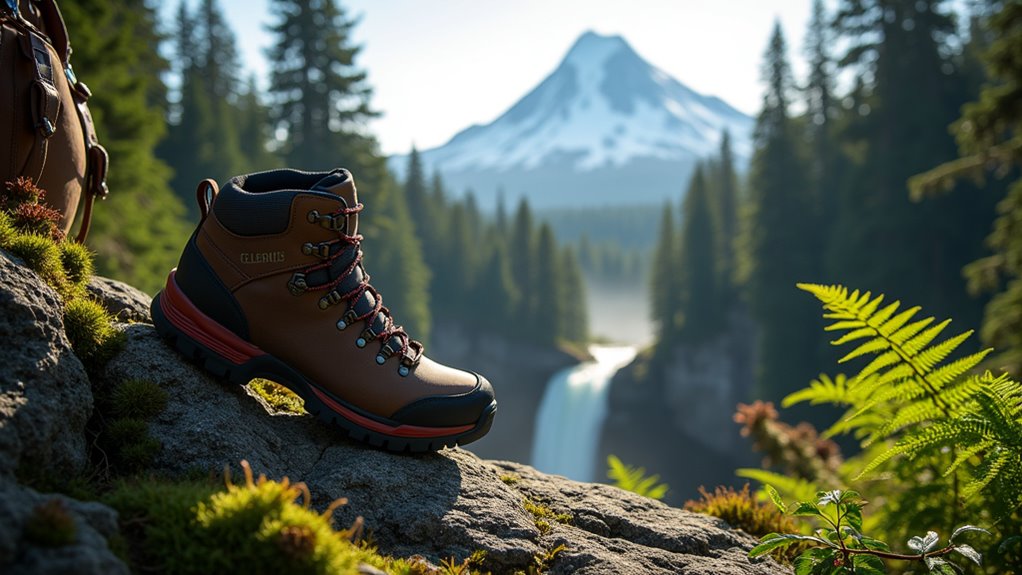
Unleash your mountaineering skills on Portland's most demanding, unmarked alpine routes that separate true adventurers from weekend hikers.
It’s no coincidence that Portland’s proximity to the Cascades attracts serious hikers looking beyond typical trail networks. You’ve probably conquered Mount Hood’s standard routes, but the region’s true challenges remain largely untested by casual adventurers. Technical ascents through glacial terrain, brutal desert climbs, and unmarked alpine approaches separate weekend warriors from committed mountaineers. These aren’t Instagram-friendly day hikes—they’re demanding expeditions that’ll test every skill you’ve developed, assuming you’re prepared for what lies ahead.
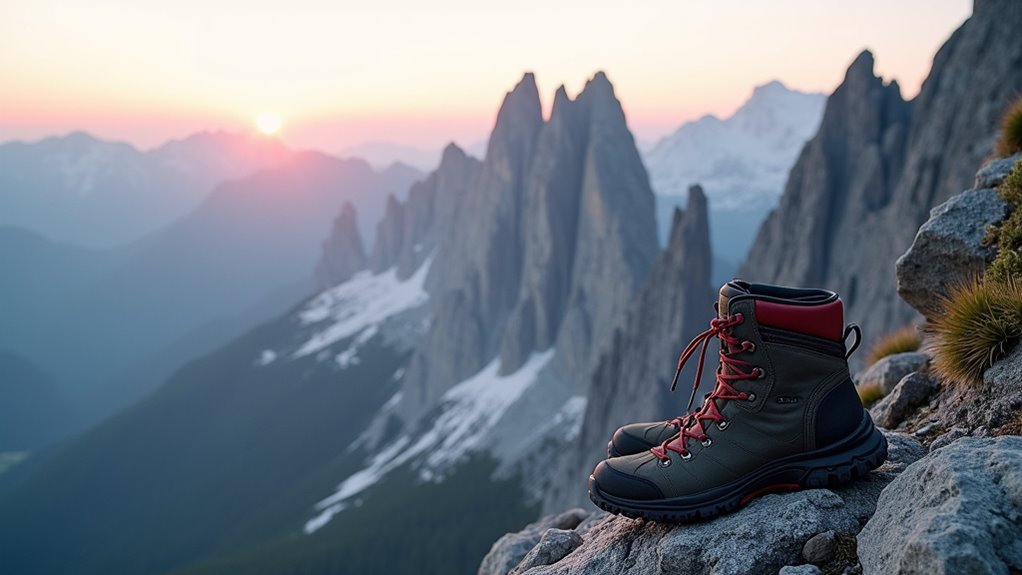
Why do seasoned Portland hikers speak of Devil’s Backbone Ridge with equal parts reverence and trepidation? You’ll understand once you’re balancing along its knife-edge ridgeline, where a misstep means serious consequences. This 12-mile traverse in Eagle Cap Wilderness isn’t just physically demanding—it’s mentally exhausting.
You’ll need mountaineering experience and comfort with Class 3 scrambling. The route requires route-finding skills since cairns disappear in bad weather. Start before dawn; afternoon thunderstorms turn exposed granite into lightning magnets. Pack layers—temperatures swing wildly between valleys and peaks.
Local hiking culture views completing Devil’s Backbone as a rite of passage. You’re not just conquering terrain; you’re joining an exclusive club of adventurers who’ve tested themselves against Oregon’s most unforgiving ridge. Respect this mountain—it’ll humble even experienced climbers.
For those seeking even greater technical challenges, the US offers world-class glacier climbing opportunities that combine mountaineering skills with ice and snow navigation.
While most climbers tackle Mount Jefferson from the south, the north face presents Oregon’s most technical glacial challenge—one that separates weekend warriors from serious alpinists. You’ll need advanced mountaineering skills, including ice axe arrest, crampon technique, and crevasse rescue.
The Jefferson Park Glacier route demands pre-dawn starts to avoid afternoon rockfall and unstable seracs.
Your gear list includes mountaineering boots, helmet, harness, and glacier travel equipment. Weather windows are notoriously brief—you might wait weeks for conditions to align.
Local climbing culture views this ascent as a rite of passage; completing it earns respect among Oregon’s alpine community.
The technical crux involves traversing bergschrunds and exposed ice sections. You’re committing to serious consequences where rescue becomes extremely difficult.
When camping at lower elevations during your approach, mosquito nets become essential protection against the dense insect populations that thrive in the area’s alpine lakes and wetlands.
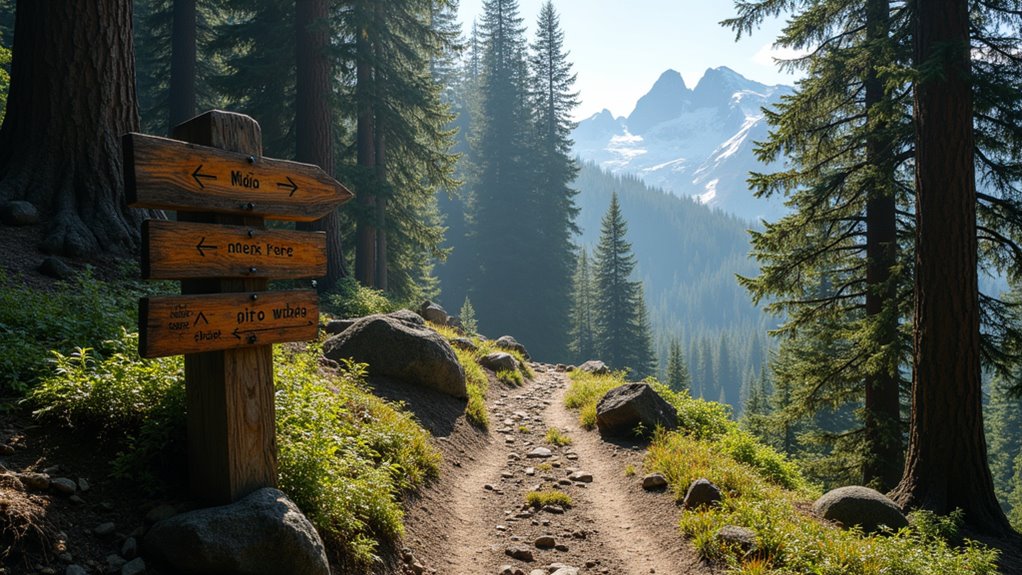
Where else can you hike through a landscape that resembles an alien planet while staying on well-maintained trails? The Obsidian Trail Extended Loop delivers exactly that experience, weaving through Central Oregon’s volcanic wonderland where black glass crunches beneath your boots.
Step into Central Oregon’s volcanic wonderland where black obsidian glass crunches beneath your boots on this otherworldly trail adventure.
You’ll need permits during peak season—reserve early since they disappear faster than snow in July. The 12-mile loop challenges you with 1,400 feet of elevation gain while showcasing obsidian fields, alpine lakes, and jaw-dropping Three Sisters views.
Pack extra water; volcanic terrain offers little shade. Sturdy boots are essential—sharp obsidian shreds lightweight footwear. Morning starts beat afternoon crowds and reduce permit competition.
This trail perfectly bridges Oregon’s hiking culture: accessible enough for weekend warriors, spectacular enough for serious adventurers seeking Instagram-worthy volcanic landscapes.
Beyond the well-trodden volcanic trails lies Oregon’s best-kept secret: unmarked routes that lead to pristine alpine lakes known only to locals and seasoned bushwhackers. You’ll need advanced navigation skills and serious commitment to reach these hidden gems scattered throughout the Cascades.
Finding these routes requires detective work and local connections:
You’re venturing into true wilderness where rescue isn’t guaranteed. Pack extra gear, inform someone of your plans, and expect to bushwhack through thick undergrowth. The reward? Crystal-clear lakes reflecting untouched peaks, where you mightn’t see another soul for days.
This isn’t Instagram hiking—it’s old-school Pacific Northwest adventure. After days of remote exploration, maintaining tent cleanliness becomes crucial for comfort and extending your gear’s lifespan in these demanding backcountry conditions.
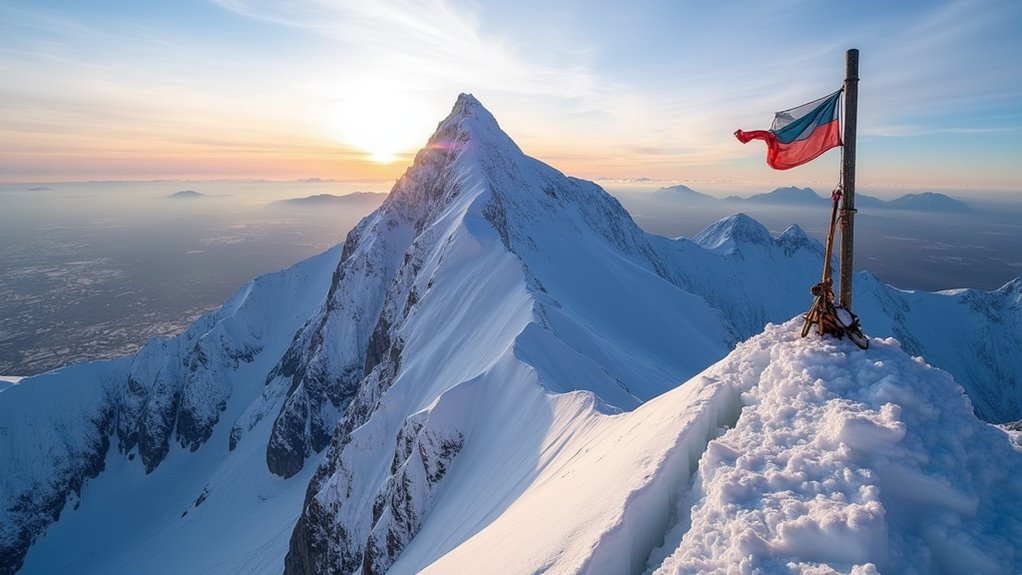
When February storms batter Mount Hood’s southern flanks, Cooper Spur on the mountain’s north side offers Oregon’s most technical winter climbing challenge. You’ll need advanced mountaineering skills, crampons, ice axes, and avalanche gear for this exposed route that’s claimed lives.
The approach from Cloud Cap trailhead demands four-wheel drive through snow-packed forest roads. You’ll traverse steep ice fields and navigate crevasse-prone glacial terrain above treeline. Portland’s climbing community considers Cooper Spur the ultimate winter test—it separates weekend warriors from serious alpinists.
Start before dawn to avoid afternoon weather changes. Most climbers establish high camp at timberline, then push for the summit in pre-dawn darkness.
The technical difficulty and objective hazards make this route unsuitable for anyone without extensive glacier travel experience. Before committing to this challenging ascent, consider whether renting specialized gear might be more practical than purchasing expensive mountaineering equipment you’ll use infrequently.
While Cooper Spur tests your technical climbing skills, the Salmon-Huckleberry Wilderness challenges your navigation prowess across 44,560 acres of dense old-growth forest where trails disappear into elk paths and compass readings become your lifeline.
You’ll need serious backcountry skills here. The wilderness doesn’t coddle weekend warriors—it’s designed for experienced hikers who can handle multi-day route-finding through unmarked terrain. Old-growth canopy blocks GPS signals, forcing you to rely on traditional navigation methods.
Essential gear for multi-day wilderness navigation:
Plan 3-5 days minimum. Water sources are abundant but scattered. You’ll encounter stream crossings, dense undergrowth, and weather changes that can disorient even seasoned hikers.
Before heading out, check the weather forecast to prepare for rapidly changing conditions that can make navigation even more challenging in this demanding wilderness environment.
This wilderness separates true backpackers from casual trail users.
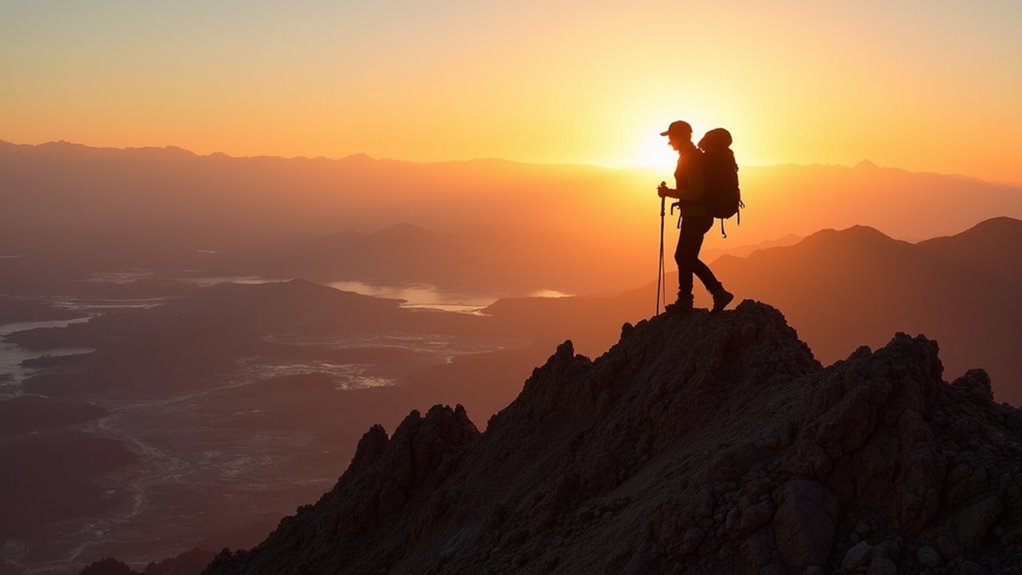
Unlike the forested wilderness challenges of western Oregon, Steens Mountain’s 9,738-foot summit demands you conquer Oregon’s most unforgiving desert landscape where blazing heat, bone-dry air, and relentless exposure can break unprepared hikers within hours.
You’ll face temperature swings from scorching days to near-freezing nights, even in summer. The East Rim Trail punishes with seventeen miles of exposed terrain where shade doesn’t exist. Start before dawn—afternoon thunderstorms materialize quickly, turning the mountain deadly.
Pack triple your normal water supply and electrolyte replacements. The high desert’s thin air and constant wind dehydrate you faster than coastal climates. Weather changes within minutes here.
Before attempting this brutal ascent, master essential tent camping skills since you’ll likely need to establish camp in harsh conditions with limited shelter options.
This isn’t Instagram hiking—it’s survival hiking. Ranchers and Native tribes have respected this land’s harsh beauty for generations. You should too.
From the desert’s harsh exposure, Oregon’s crown jewel presents an entirely different beast—the 33-mile Rim Trail around Crater Lake where you’ll navigate volcanic terrain at 7,000+ feet elevation while battling unpredictable mountain weather that can shift from bluebird skies to whiteout conditions in minutes.
You’re circling America’s deepest lake, formed by Mount Mazama’s collapse 7,700 years ago. The Klamath Tribes consider this sacred ground—respect their ancestral connection while you’re grinding through pumice fields and scrambling over volcanic rock.
You’re treading on sacred Klamath land while circling the collapsed remnants of an ancient volcano that created America’s deepest alpine lake.
Essential gear considerations:
Snow lingers until July most years, making this a narrow-window challenge. You’ll gain roughly 4,000 feet of elevation over rolling terrain that’ll test your endurance against Oregon’s most iconic backdrop.
For those seeking additional vertical challenges along the route, the volcanic cliffs and rock formations provide excellent opportunities for rock climbing adventures during your circumnavigation.
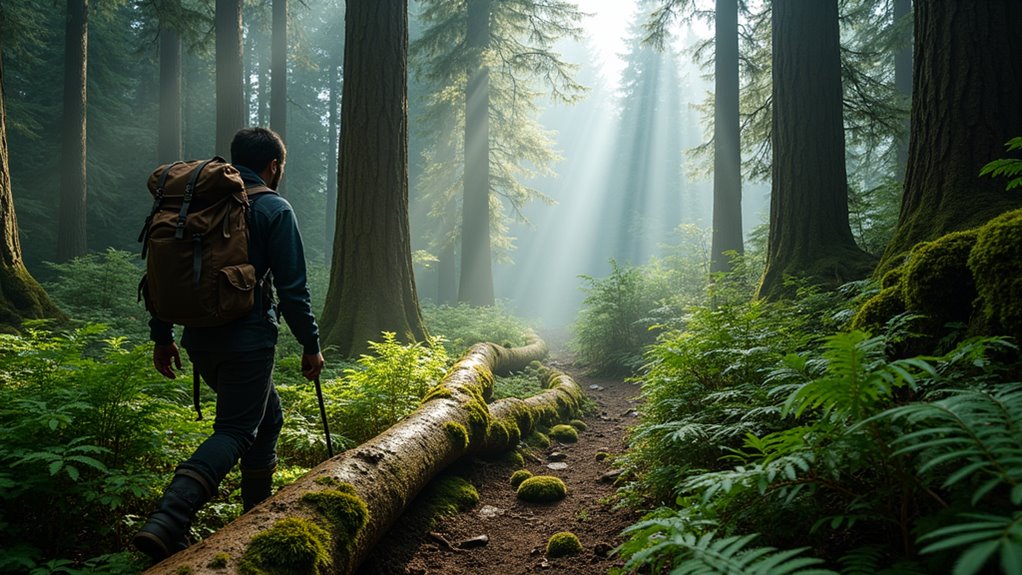
Beyond Washington’s maintained trail networks, the Olympic Peninsula’s temperate rainforest demands true wilderness navigation skills as you’ll push through dense undergrowth, ford rushing rivers, and create your own paths through some of America’s most pristine ecosystems.
You’ll need serious gear: waterproof everything, GPS with backup batteries, and emergency shelter. The Hoh River corridor offers classic bushwhacking challenges, while the Quinault’s upper reaches test experienced navigators. Expect devil’s club thorns, fallen giants blocking progress, and creek crossings that’ll soak you regardless of preparation.
Local tribes consider these lands sacred, so respect cultural boundaries and Leave No Trace principles. Weather changes instantly—sunshine becomes torrential downpour within minutes.
Start with day trips before attempting multi-day expeditions. This isn’t Instagram hiking; it’s survival-level wilderness immersion that separates casual adventurers from hardcore explorers. While many families gravitate toward family camping adventures for bonding experiences, these challenging bushwhacking expeditions require seasoned outdoor enthusiasts prepared for serious wilderness challenges.
After hearing about the Olympic Peninsula’s unforgiving terrain, you’re probably wondering what separates successful bushwhackers from search-and-rescue statistics. The answer lies in meticulous preparation that Pacific Northwest veterans swear by.
Your gear arsenal must include:
Navigation becomes critical when deer trails vanish into impenetrable salmonberry thickets. Download multiple map apps and carry a compass—technology fails when you need it most.
For overnight excursions, consider bringing a quality air mattress that provides insulation from the cold ground and ensures restorative sleep between challenging days on the trail.
Establish check-in protocols with trusted contacts, providing detailed route plans and expected return times. Remember, bushwhacking isn’t about conquering nature; it’s about respectfully steering through ecosystems that predate human presence by millennia.
You’ve explored the routes, you’ve studied the maps, and you’ve tested your gear—now it’s time to embrace Portland’s ultimate hiking challenges. Whether you’re traversing Devil’s Backbone’s exposed ridges, conquering Jefferson’s icy slopes, or bushwhacking through Olympic’s dense forests, you’re joining a culture that values grit over glamour. Pack smart, respect the wilderness, and trust your instincts. These aren’t just hikes—they’re transformative journeys that’ll redefine your limits.